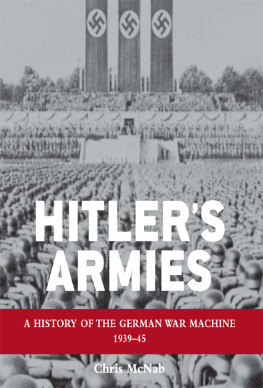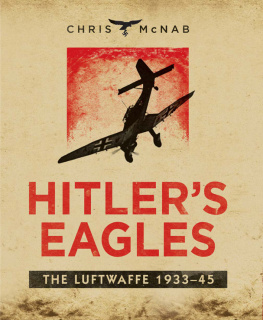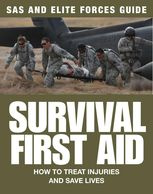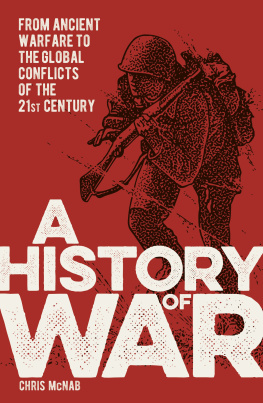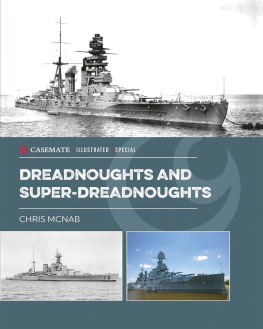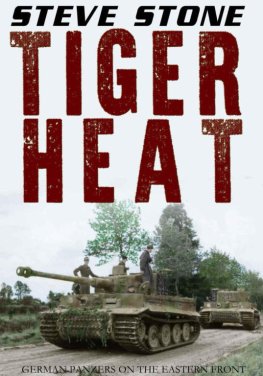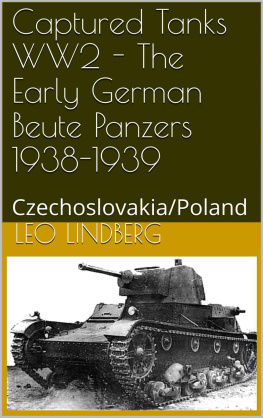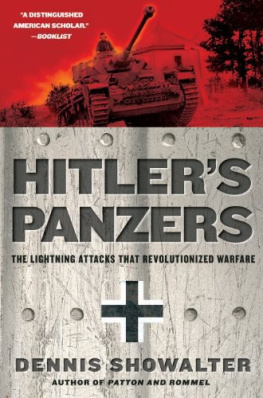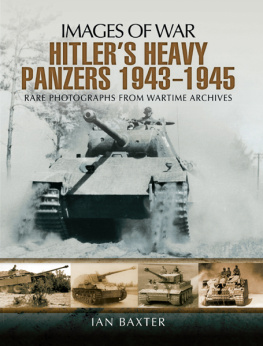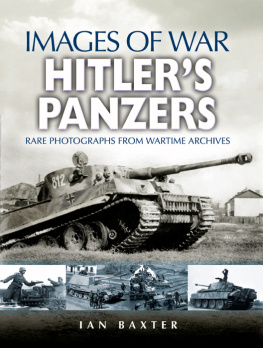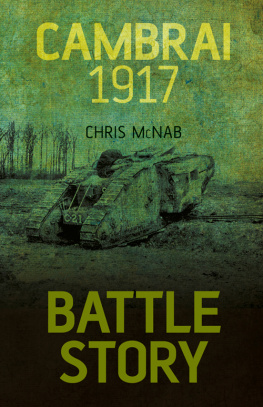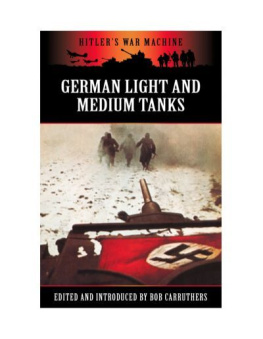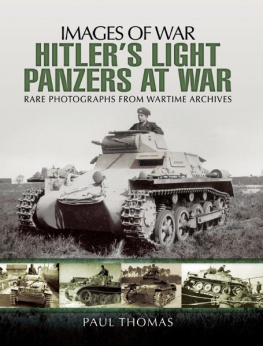Chris McNab - Hitlers Tanks: German Panzers of World War II
Here you can read online Chris McNab - Hitlers Tanks: German Panzers of World War II full text of the book (entire story) in english for free. Download pdf and epub, get meaning, cover and reviews about this ebook. year: 2020, publisher: Bloomsbury Publishing, genre: Non-fiction. Description of the work, (preface) as well as reviews are available. Best literature library LitArk.com created for fans of good reading and offers a wide selection of genres:
Romance novel
Science fiction
Adventure
Detective
Science
History
Home and family
Prose
Art
Politics
Computer
Non-fiction
Religion
Business
Children
Humor
Choose a favorite category and find really read worthwhile books. Enjoy immersion in the world of imagination, feel the emotions of the characters or learn something new for yourself, make an fascinating discovery.

- Book:Hitlers Tanks: German Panzers of World War II
- Author:
- Publisher:Bloomsbury Publishing
- Genre:
- Year:2020
- Rating:4 / 5
- Favourites:Add to favourites
- Your mark:
- 80
- 1
- 2
- 3
- 4
- 5
Hitlers Tanks: German Panzers of World War II: summary, description and annotation
We offer to read an annotation, description, summary or preface (depends on what the author of the book "Hitlers Tanks: German Panzers of World War II" wrote himself). If you haven't found the necessary information about the book — write in the comments, we will try to find it.
Hitlers Tanks: German Panzers of World War II — read online for free the complete book (whole text) full work
Below is the text of the book, divided by pages. System saving the place of the last page read, allows you to conveniently read the book "Hitlers Tanks: German Panzers of World War II" online for free, without having to search again every time where you left off. Put a bookmark, and you can go to the page where you finished reading at any time.
Font size:
Interval:
Bookmark:
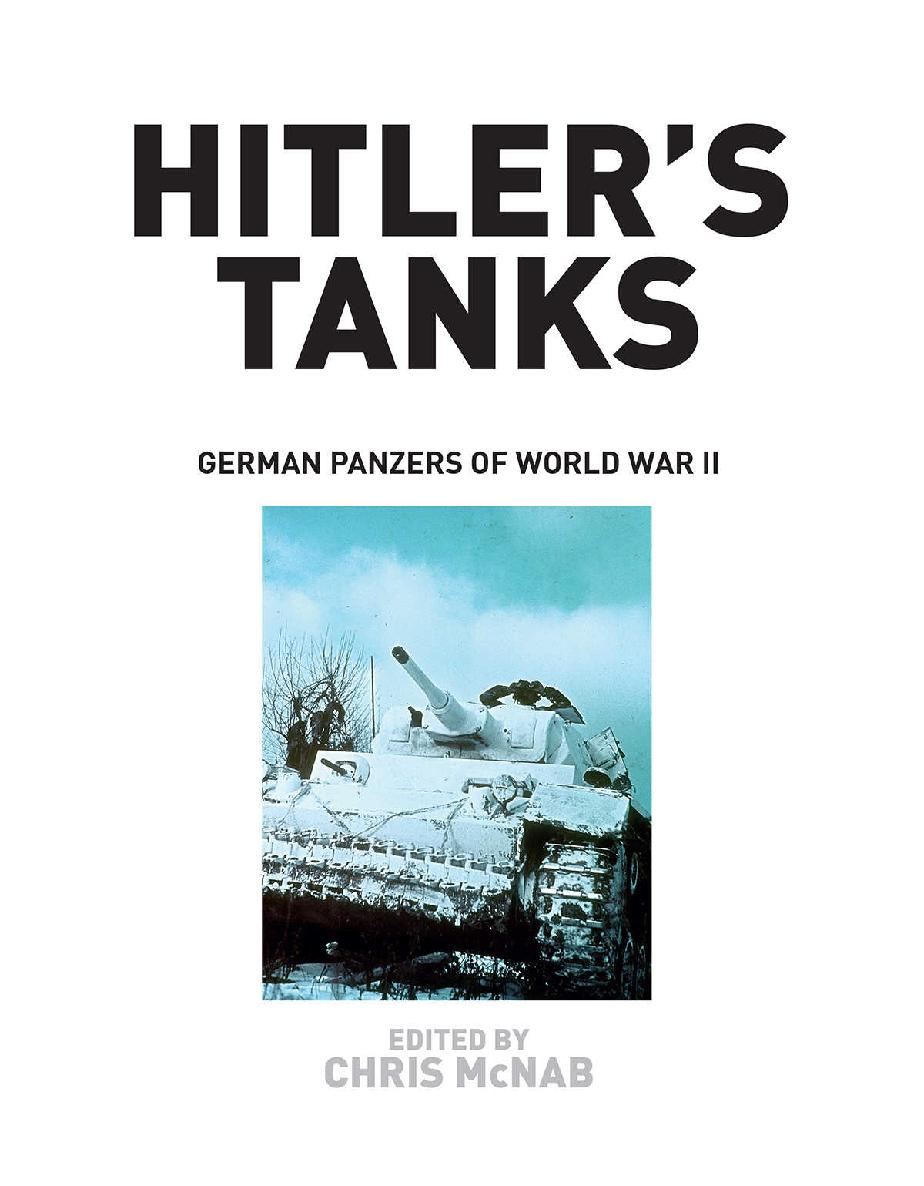
CONTENTS
INTRODUCTION
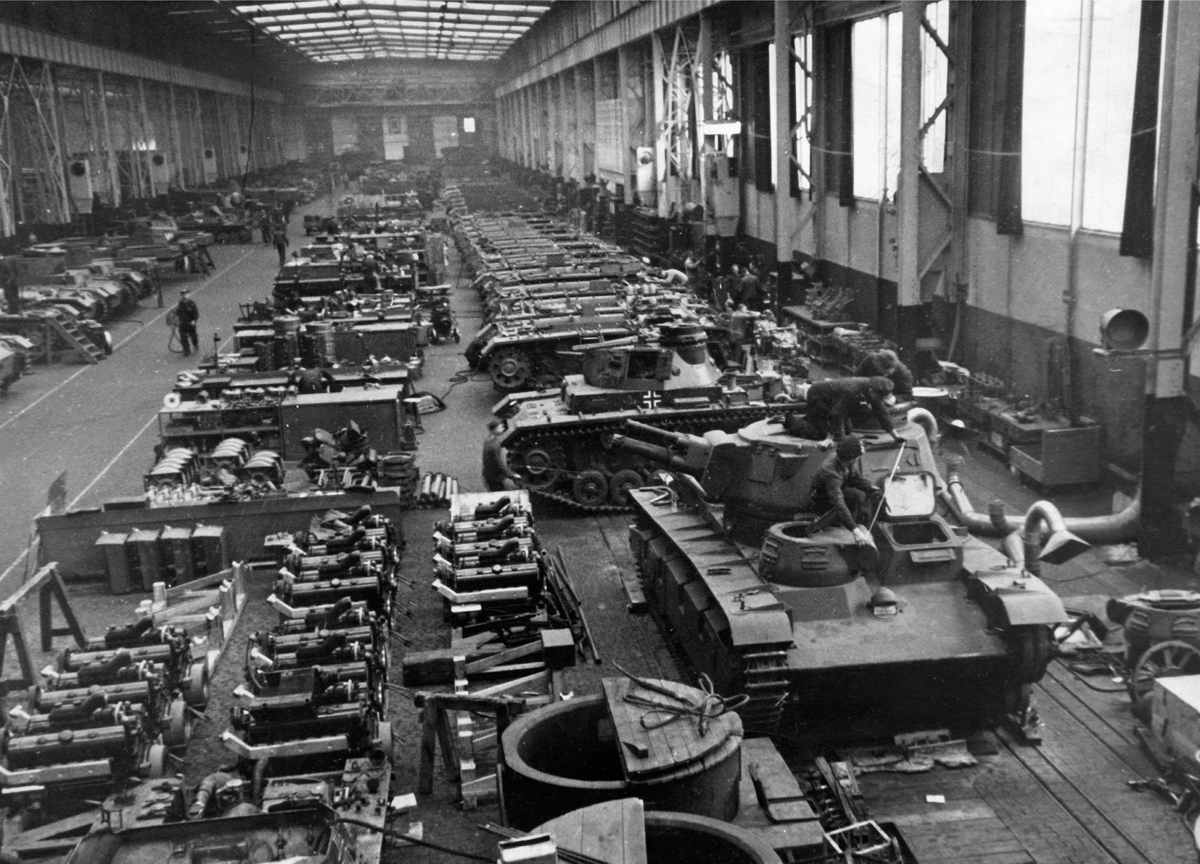
Light Panzers are manufactured in the assembly hangar of a German armaments factory, 1940. (Photo by Heinrich Hoffmann/ullstein bild via Getty Images)
Although armoured warfare was, from 1916, a component of World War I, it was only in World War II that armour became truly central to the land battle model. And of all the combatants at the beginning of that conflict in 1939, it was Germany who, arguably, had most successfully integrated the tank into its tactical thinking, prominently in the tactical phenomenon that we now call Blitzkrieg (although that term wasnt significant in contemporary use). From 1939 to 1945, therefore, it was Hitlers Panzer battalions and divisions that would generally occupy the forefront of any land campaign.
The principal component of the Panzer division was, of course, its tank element. The establishment envisaged for the original Panzer divisions contained two two-battalion regiments, each battalion consisting of four 32-tank companies. Together with armoured command vehicles, this gave the Panzer division a total tank strength of 561 a dream which never approached realization. Despite the rearmament programme, German tank production in the immediate pre-war years was sluggish and in September 1939 the majority of battalions possessed only five Panzerkampfwagen (PzKpfw) IIIs, sufficient to equip one platoon, a total of 20 per division. The balance of the divisional tank strength consisted of 24 PzKpfw IVs and light PzKpfw Is and IIs, supplemented in some cases by the recently acquired Czech 35(t)s and 38(t)s. Even so, the average number of tanks in the division was 320, so that battalions were forced to leave their fourth companies, i.e. 25 per cent of their paper strength, behind in their depots.
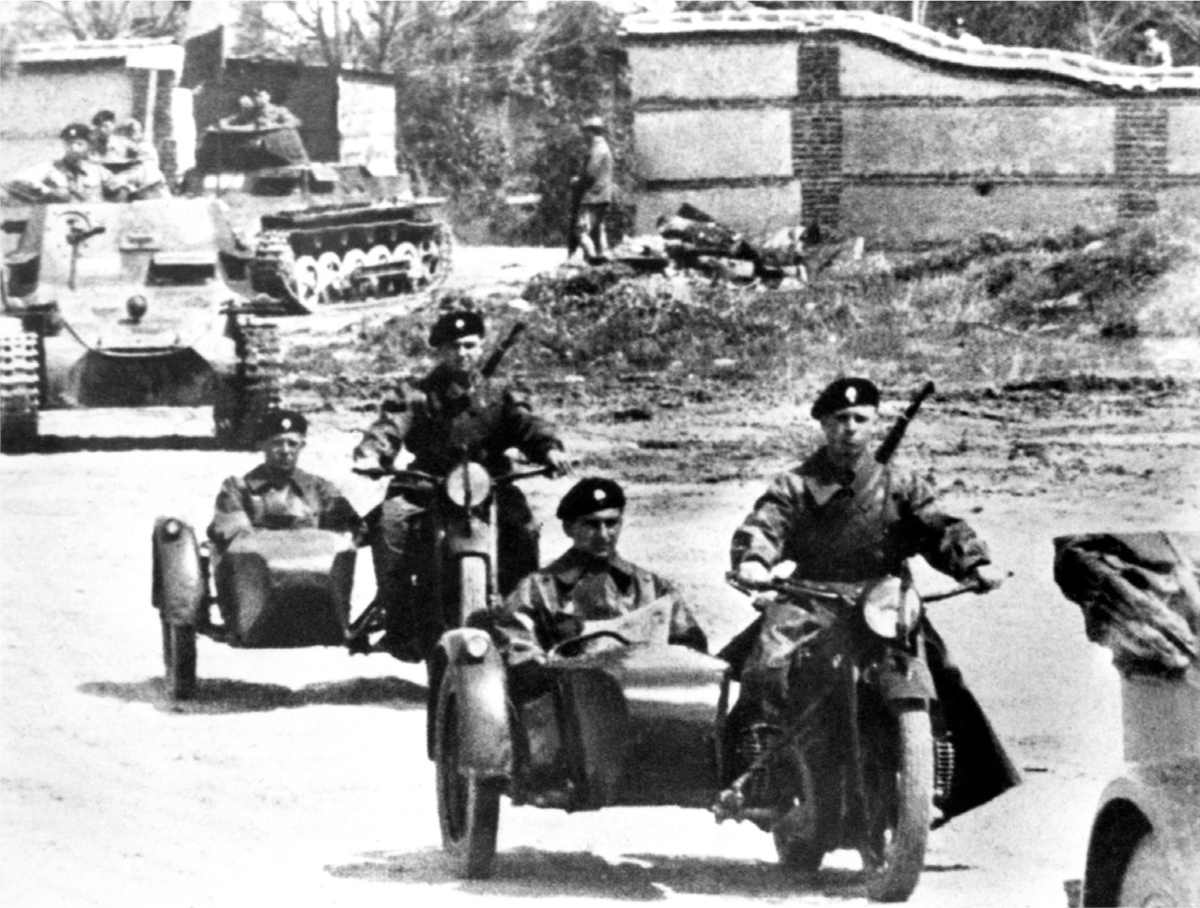
A German PzKpfw I armoured column during the Spanish Civil War. The tank immediately behind the motorcyclists is a Kleiner Panzerbefehlswagen, a single-gun command car variant. (AirSeaLand/Cody)
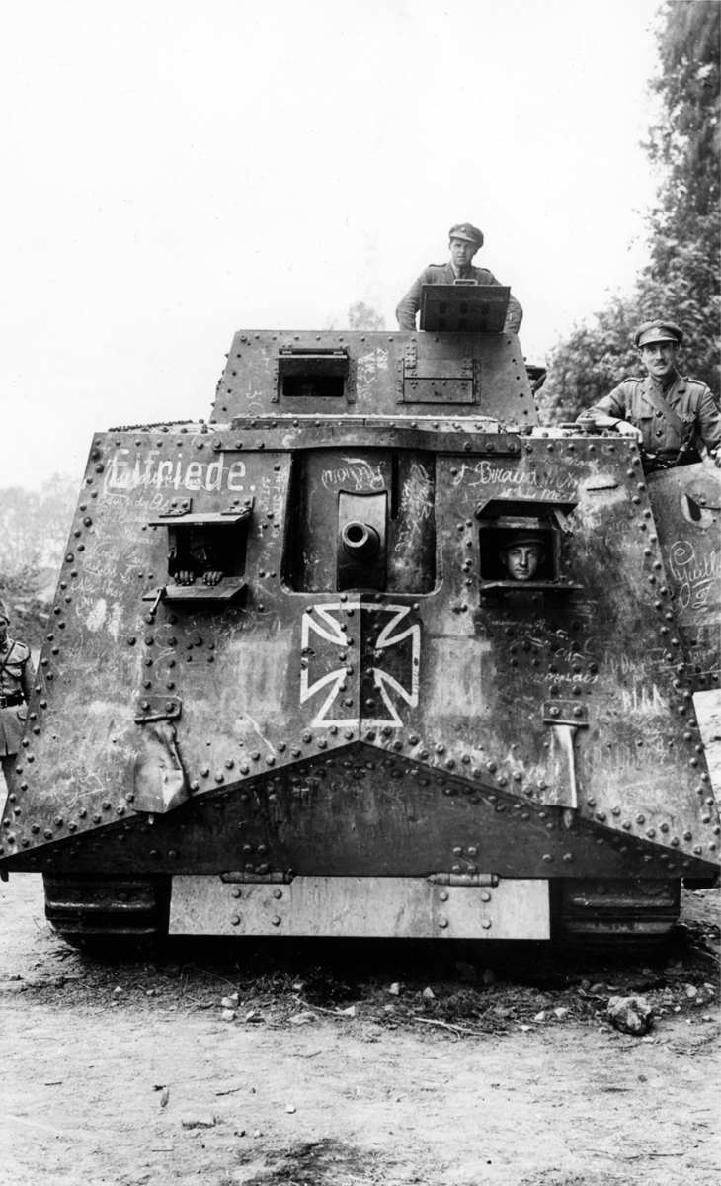
The early days of German armour. A captured German A7V heavy tank, only 20 of which were produced in 191718, is here manned by its British crew. (AirSeaLand/Cody)
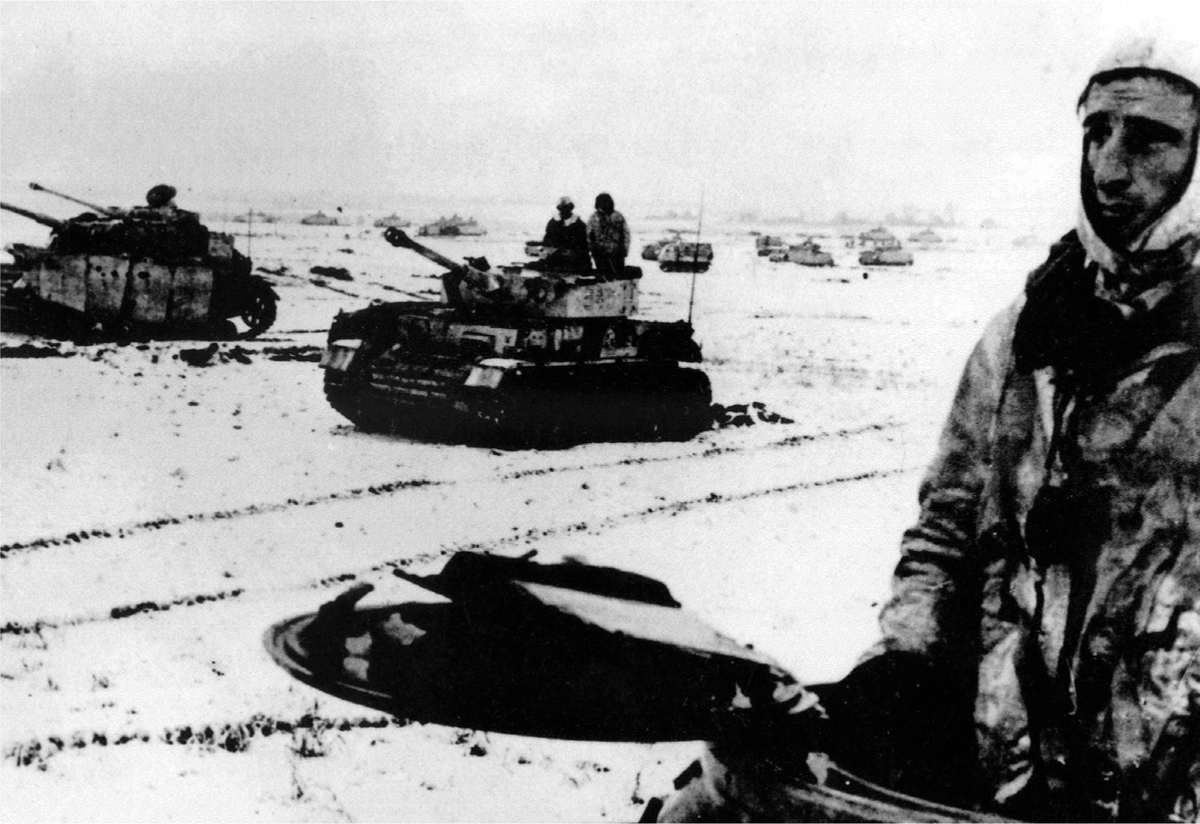
PzKpfw IV tanks of the I. SS-Panzer-Korps on manoeuvres near Kharkov in early 1943. Many crew commanders are standing up in the open turret hatches for improved observation. (AirSeaLand/Cody)
By May 1940 the situation had improved sufficiently for each of the divisions of Heinz Guderians XIX. Panzer-Korps to be equipped with 90 PzKpfw IIIs and 36 PzKpfw IVs, the divisional strength being fleshed out with PzKpfw Is and IIs. Other divisions had an establishment of 50 PzKpfw IIIs and 24 PzKpfw IVs, plus the lighter German models. Those divisions (6th, 7th and 8th) whose primary armament consisted of 3.7cm-armed Czech vehicles do not seem to have received an official allocation of PzKpfw IIIs, but Rommels 7. Panzer-Division certainly acquired several, since he records the loss of six during the fighting at Arras on 21 May. Overall divisional strengths varied between 218 and 276 tanks, about half the theoretical establishment.
Following the startling success achieved in France, Hitler decided to double the number of Panzer divisions. This was achieved by halving the tank element, which was reduced to a single regiment of two battalions, although six regiments had a three-battalion establishment. By now the PzKpfw I and the 35(t) were considered obsolete, but the PzKpfw II was still employed for reconnaissance and there were sufficient PzKpfw IIIs to equip two 22-tank companies in each battalion.
At the time of the invasion of Russia, divisional strength varied between 150 and 200 tanks. In 1942 there was a further rise in the number of Panzer divisions in spite of the losses of the previous year and the slow growth in tank production. On the Eastern Front, the northern and central sectors remained relatively quiescent, and regiments possessed equipment for a single battalion only. On the active southern sector, the number of tank battalions was increased to three, but in practical terms this meant a mere 170 tanks. At this stage it was decided to increase the number of battalion companies to four, the old pre-war figure, but in the majority of cases the equipment was simply not available to implement the directive. Indeed, following the Stalingrad campaign and the withdrawal from the Caucasus, the average Panzer division possessed only about 27 tanks.
During 1943 the PzKpfw III declined rapidly in importance as a battle tank, its place being taken by the improved PzKpfw IV and the PzKpfw V Panther. The PzKpfw IV was originally intended as a fire-support tank to complement the main battle tank of the Panzer divisions. This mission changed after Germany confronted the Red Army during Operation Barbarossa in the summer of 1941. The appearance of large numbers of Soviet T-34 and KV tanks was a technological shock to the Panzer force. These tanks were significantly better than the PzKpfw III in terms of armour, firepower and mobility. As a result, the PzKpfw IV shifted from being a supplementary tank in the Panzer divisions to being the principal battle tank. Use of the PzKpfw III gradually faded, production of the chassis shifted from the tank version to the StuG III assault gun, and the PzKpfw IV began to outnumber the PzKpfw III in service by July 1943.
The Panther tank was also developed in response to the tank crisis that befell the Wehrmacht during the invasion of Russia in June 1941. It represented a significant shift in tank design philosophy, fostered in large measure by Germanys changing military fortunes. In the haste to put the design into production, however, insufficient attention was paid to the impact of the weight increases on the power train, and the Panther would be plagued by durability problems because its engine and final drives were better suited to the original, lighter proposals. By any other Armys definition, the Panther was a heavy tank. Although originally intended to replace the existing PzKpfw III and PzKpfw IV medium tanks, its cost and complexity limited the scale of its production. By 1944, the Wehrmacht was saddled with a mixed fleet of Panthers and PzKpfw IV tanks instead of an integrated fleet, burdening the Army with both logistics and training difficulties.
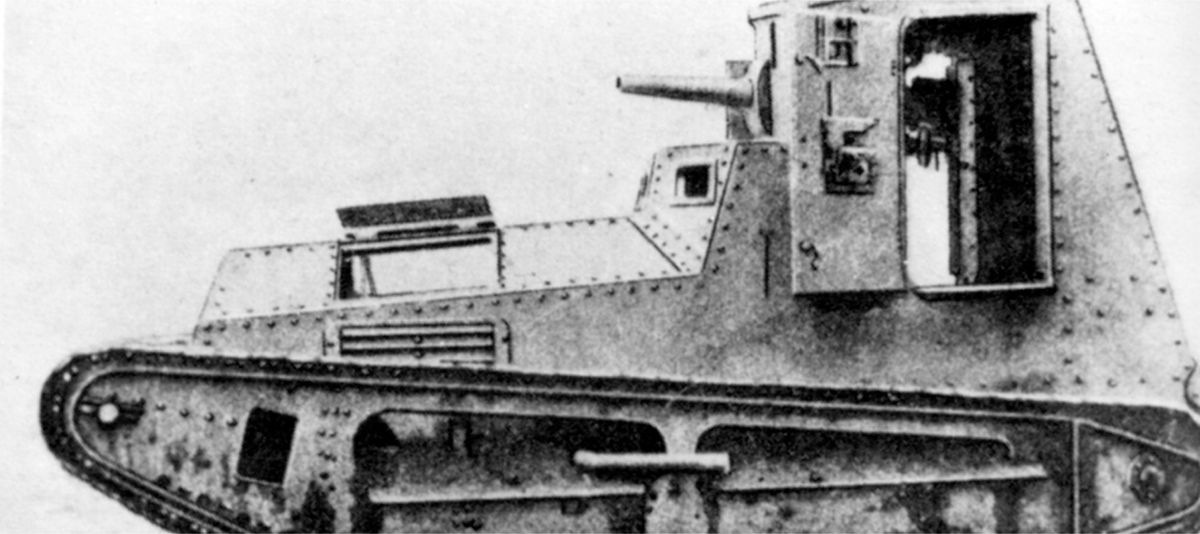
A German Leichter Kampfwagen II, a light tank of World War I. It was armed with a 3.7cm Krupp or 5.7cm Maxim-Nordenfelt gun, and had armour up to 14mm thick. (AirSeaLand/Cody)
The new, heavyweight Tiger I was also making an increasing appearance, first in North Africa in 1942, then spreading throughout the Eastern and Western Fronts. The Tiger I is the most famous tank of World War II. It earned its legend in the savage tank fighting on the Eastern Front in 1943, notably in the battle of Kursk, and became the boogeyman of all Allied tankers: Soviet, British and American. By the summer of 1944, however, it was no longer invincible once the Allies began deploying more powerful tank guns such as the British 17-pdr, the Soviet 85mm and the American 90mm. The increasing spectrum of threats partly led to the development of the Tiger II, a thunderous piece of technology. Although officially designated as PzKpfw Tiger Ausf B, the Tiger II was more often known by its unofficial name, initially coined by the Reich Ministry for Armament and Ammunition, Knigstiger (Bengal Tiger), which was incorrectly translated by Allied intelligence as King Tiger or Royal Tiger. By expanding on the thick armour and large main armament of the Tiger I, and the more modern design of the Panther, the 70-tonne Tiger II presented a formidable battlefield solution.
Next pageFont size:
Interval:
Bookmark:
Similar books «Hitlers Tanks: German Panzers of World War II»
Look at similar books to Hitlers Tanks: German Panzers of World War II. We have selected literature similar in name and meaning in the hope of providing readers with more options to find new, interesting, not yet read works.
Discussion, reviews of the book Hitlers Tanks: German Panzers of World War II and just readers' own opinions. Leave your comments, write what you think about the work, its meaning or the main characters. Specify what exactly you liked and what you didn't like, and why you think so.

